Simulation Standard Technical Journal
A Journal for Process and Device Engineers
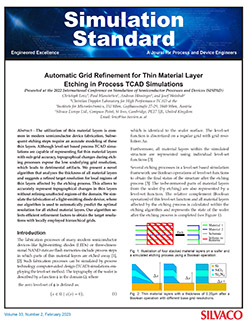
Automatic Grid Refinement for Thin Material Layer Etching in Process TCAD Simulations
The utilization of thin material layers is common in modern semiconductor device fabrication. Subsequent etching steps require an accurate modeling of these thin layers. Although level-set based process TCAD simulations are capable of representing flat thin material layers with sub-grid accuracy, topographical changes during etching processes expose the low underlying grid resolution, which leads to detrimental artifacts.
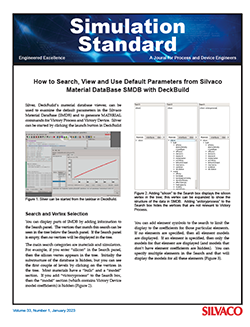
How to Search, View and Use Default Parameters from the Silvaco Material DataBase SMDB with DeckBuild
Silver, DeckBuild’s material database viewer, can be used to examine the default parameters in the Silvaco Material DataBase (SMDB) and to generate MATERIAL commands for Victory Process and Victory Device. Silver can be started by clicking the launch button in DeckBuild.
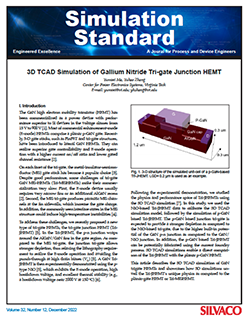
3D TCAD Simulation of Gallium Nitride Tri-gate Junction HEMT
The GaN high electron mobility transistor (HEMT) has been commercialized as a power device with performance superior to Si devices in the voltage classes from 15 V to 900 V [1]. Most of commercial enhancement-mode (E-mode) HEMTs comprise a planar p-GaN gate. Recently, 3-D gate stacks, such as FinFET and tri-gate structures, have been introduced to lateral GaN HEMTs. They can realize superior gate controllability and E-mode operation with a higher current on/off ratio and lower gated channel resistance [2].
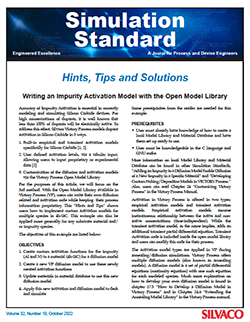
Writing an Impurity Activation Model with the Open Model Library
Accuracy of Impurity Activation is essential in correctly modeling and simulating Silicon Carbide devices. For high concentrations of dopants, it is well known that less than 100% of dopants will be electrically active. To address this effect, Silvaco Victory Process models dopant activation in Silicon Carbide in 3 ways.
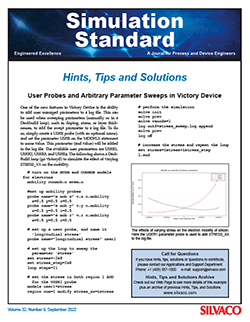
User Probes and Arbitrary Parameter Sweeps in Victory Device
One of the new features in Victory Device is the ability to add user managed parameters to a log file. This can be used when sweeping parameters (manually or in a Deckbuild loop), such as doping, stress, or layer thicknesses, to add the swept parameter to a log file. To do so, simply create a USER probe (with an optional name), and set the parameter USER on the MODELS statement to some value. This parameter (and value) will be added to the log file. The available user parameters are USER1, USER2, USER3, and USER4. The following shows a DeckBuild loop (go victoryd) to simulate the effect of varying STRESS_XX on the mobility.
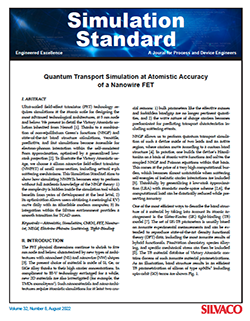
Quantum Transport Simulation at Atomistic Accuracy of a Nanowire FET
The FET physical dimensions continue to shrink to five nm node and below, characterized by new types of architectures with nanosheet (NS) and nanowire (NW) shapes [3]. The present choice of material is made of Si, Ge, or SiGe alloy thanks to their high carrier concentrations. In compliment to III-V technology envisaged for a while, new 2D materials are also investigated (for example, the TMDs monolayers1). Such nanomaterials and nano-architectures require atomistic simulations for at least two crucial reasons: 1) bulk parameters like the effective masses and forbidden bandgap are no longer pertinent quantities, and 2) the wave nature of charge carriers becomes predominant for predicting transport characteristics including scattering events.

